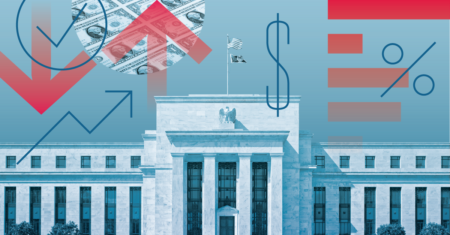
Oil prices are like the weather: they can swing suddenly when a storm brews in the Middle East. Since mid-June, fighting between Iran and Israel—and targeted U.S. missile strikes on Iranian nuclear sites—has sent crude prices on a roller-coaster ride, first jumping toward $81 a barrel and then falling back below $75 as traders tried to guess whether shipping lanes might close or stay open.politico.combloomberg.com Below is a plain-English guide—complete with handy headings, links, and take-home tips—so any driver or small-business owner can understand what is really happening and what it may do to the price of gasoline at the pump.

Oil Prices Today: Where We Stand
Brent crude, the world’s benchmark, was changing hands near $77 a barrel on 23 June; the U.S. grade, WTI, sat around $71.politico.com Those prices are about $10 higher than they were two weeks ago but well below the panicky peaks of 2022.
Why the tug-of-war?
- Traders add a “risk premium.” Goldman Sachs estimates roughly $10 of every barrel’s price right now reflects fear that the conflict could get worse.reuters.com
- Yet the market is still well supplied. The International Energy Agency (IEA) says global output is rising, mostly from the U.S. and Brazil, leaving about 4 million barrels a day of spare capacity if OPEC giants open the taps.iea.orgiea.org
In short, bad headlines push prices up, but ample supply and cool-headed investors pull them down.
Why a War So Far Away Can Raise Your Fuel Bill
The Strait of Hormuz: A Crowded Highway for Oil (H2)
Picture a two-lane bridge that carries one-fifth of all the oil in the world every day.reuters.com That bridge is the Strait of Hormuz, the narrow waterway Iran could try to block if the shooting war escalates.
If even half that traffic stopped, bankers at HSBC and Goldman Sachs think Brent could sprint past $110 a barrel—adding roughly 25 ¢ per gallon for U.S. drivers and 7 pence per litre for UK motorists.reuters.com
U.S. Moves Matter (H3)
Washington has sent two aircraft-carrier groups to the Gulf to keep tankers moving.bloomberg.com That naval show of force reassures traders, which is one reason prices pulled back after the first spike.reuters.com

How the Conflict Has Played Out So Far
| Date | Flash Point | Market Reaction |
|---|---|---|
| 16 Jun | Israel confirms covert raids on Iranian proxies | Brent +$3 |
| 22 Jun | U.S. missiles hit Iranian nuclear sites | Brent >$81 |
| 23 Jun | Iran fires drones at U.S. base in Kuwait but spares oil terminals | Brent –6 % |
Sources: Reuters, Bloomberg politico.combloomberg.com
Key takeaway: Markets care less about headlines than about actual barrels leaving ports. So far, Iranian exports still flow.
What Could Happen Next
Scenario 1 – Conflict Stays “Contained” (H3)
- Iran keeps exporting, Hormuz stays open.
- Brent wanders between $75–$85 for the rest of 2025.reuters.com
- U.S. average gasoline drifts a few cents higher during summer driving season.
Scenario 2 – Partial Blockade (H3)
- Up to 0.75 mb/d of Iranian supply knocked out.reuters.com
- Brent edges toward $95; U.S. gas rises 15-25 ¢ per gallon; EU prices jump 7-10 pence per litre.
Scenario 3 – Hormuz Shut for Weeks (H3)
- Roughly 10 mb/d—one in every ten barrels the world uses—stranded.reuters.com
- Brent could top $110; global growth slows; pump prices soar 20 %-plus.
Governments could tap strategic reserves to cool prices, but history shows those releases trim only about 5-10 ¢ per gallon in the U.S. over a month.reuters.com
What It Means for Your Wallet
Gasoline in the United States (H2)
The national average sits at $3.22 a gallon, barely changed despite the fighting.gasprices.aaa.com If Brent jumps $10, past data suggest U.S. drivers see roughly a 24–28 ¢ rise within two weeks.reuters.com
Petrol in the UK and Europe (H3)
European forecourts track Brent more closely. Every $10 swing at the wellhead moves retail prices about 7 pence per litre after taxes.reuters.com
Diesel and Jet Fuel (H3)
Diesel moves with Brent crack spreads—now near $28 a barrel after an early-week spike.reuters.com Airlines hedge, but travellers could still feel higher ticket prices if war lingers.

Simple Steps to Prepare
- Top up early. If you’re planning a long summer road trip, filling up before another price jump can save a few pounds or dollars.
- Use fuel-saving habits. Slow acceleration and proper tire pressure can shave 5-10 % off consumption—roughly matching a 20 ¢/gal price hike.
- Watch weather—not headlines. Refinery outages during a heat wave can spike pump prices faster than distant geopolitics.
- For small firms: Ask suppliers about fuel surcharges and lock in contracts before volatility widens spreads again.
Frequently Asked Questions (H2)
Why did prices spike and then fall? (H3)
Traders first feared a supply shock and bought contracts, pushing prices up. When Iran’s response avoided energy facilities, those fears eased, and prices retreated.bloomberg.com
Could the strait really close? (H3)
Iran has threatened before but never fully shut Hormuz because it would also choke its own exports. U.S. and allied navies patrol the area to keep lanes open.reuters.com
How fast do gasoline prices react? (H3)
Retail prices usually lag crude moves by one to two weeks as stored inventory gets sold first.reuters.com
Will the U.S. release oil from its Strategic Reserve? (H3)
Officials have not ruled it out. Past releases cut U.S. pump prices about 5–10 ¢ within a month, then the effect fades.reuters.com
Where can I track prices? (H3)
- AAA Fuel Gauge for U.S. averages.gasprices.aaa.com
- UK RAC Fuel Watch (google it) for daily UK data.
- Reuters Commodities Live for global crude benchmarks.
The Bottom Line
Oil markets are on edge, but they are not panicking. As long as the Strait of Hormuz stays open and spare capacity exists, crude is more likely to hover in the $70s and $80s than to rocket into triple digits. A sudden blockade could still jolt pump prices, yet drivers have practical ways to soften the blow. Keep an eye on credible price trackers, stay fuel-efficient, and remember: sometimes the biggest market moves happen when the news is least expected.
About the Author




0 Comments